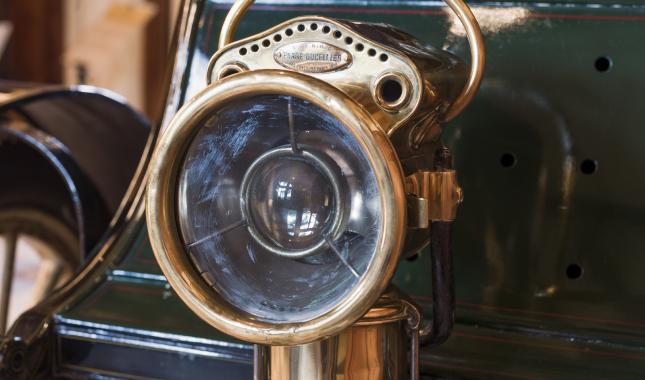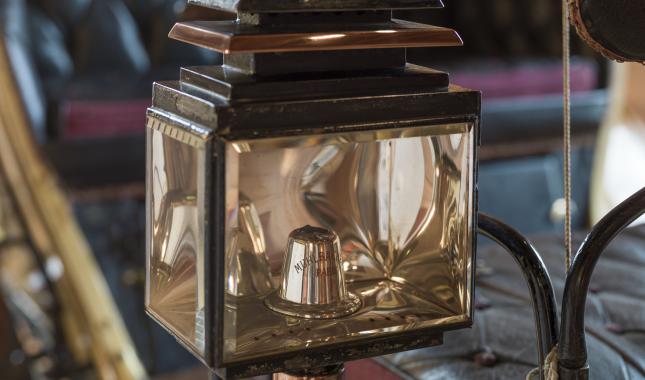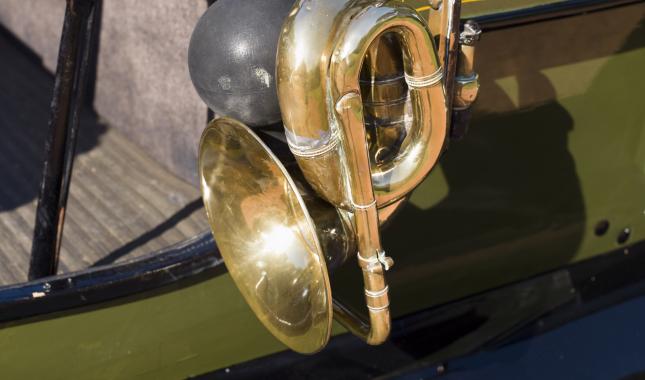Today, headlamps and horns are safety features. They enable the driver to see, be seen, and to warn other users of dangers.
In the early years of the motor car, there were no compulsory safety standards. Manufacturers were not obliged to fit headlights or horns to their vehicles. The car owners themselves chose or not to install such equipment.
Today we would consider this extremely lax, but it needs to be seen in the context of the society of the time. Personal safety was certainly a concern in the 19th and 20th centuries but it had not become a major preoccupation. Road accidents were numerous (both automobiles and horse-drawn vehicles), especially during the car races which took place on the open roads until the beginning of the 20th century, when the authorities finally required racing to take place on circuits closed to other traffic.

Phare à acétylène

Phare à bougie
Année 1890
Corne de klaxons à étoiles décoratives
Années 1910
Corne de klaxons enroulée
Années 1910Headlamps: a fashion accessory
At the end of the 19th century, the early automobiles did not have headlamps and horns fitted as safety features. Until the 1920s, headlamps were only there to warn other road users of your approach, but were not efficient enough to enable the driver to see well at night. They were candle or kerosene lanterns. To make up for their lack of efficiency, these headlamps and horns should be beautifully designed to bring sophistication to the motor car. They are made of shiny superior metal (copper or brass) and the headlamps often had coloured lenses or facets.
Then from the 1920s onwards acetylene gas lamps were designed which were brighter, and headlamp aesthetics gave way to functionality. The acetylene headlamps had to be efficient enough to drive at night. While they were not purely designed to look good, they nevertheless had to be fitted into the general design of the car.

